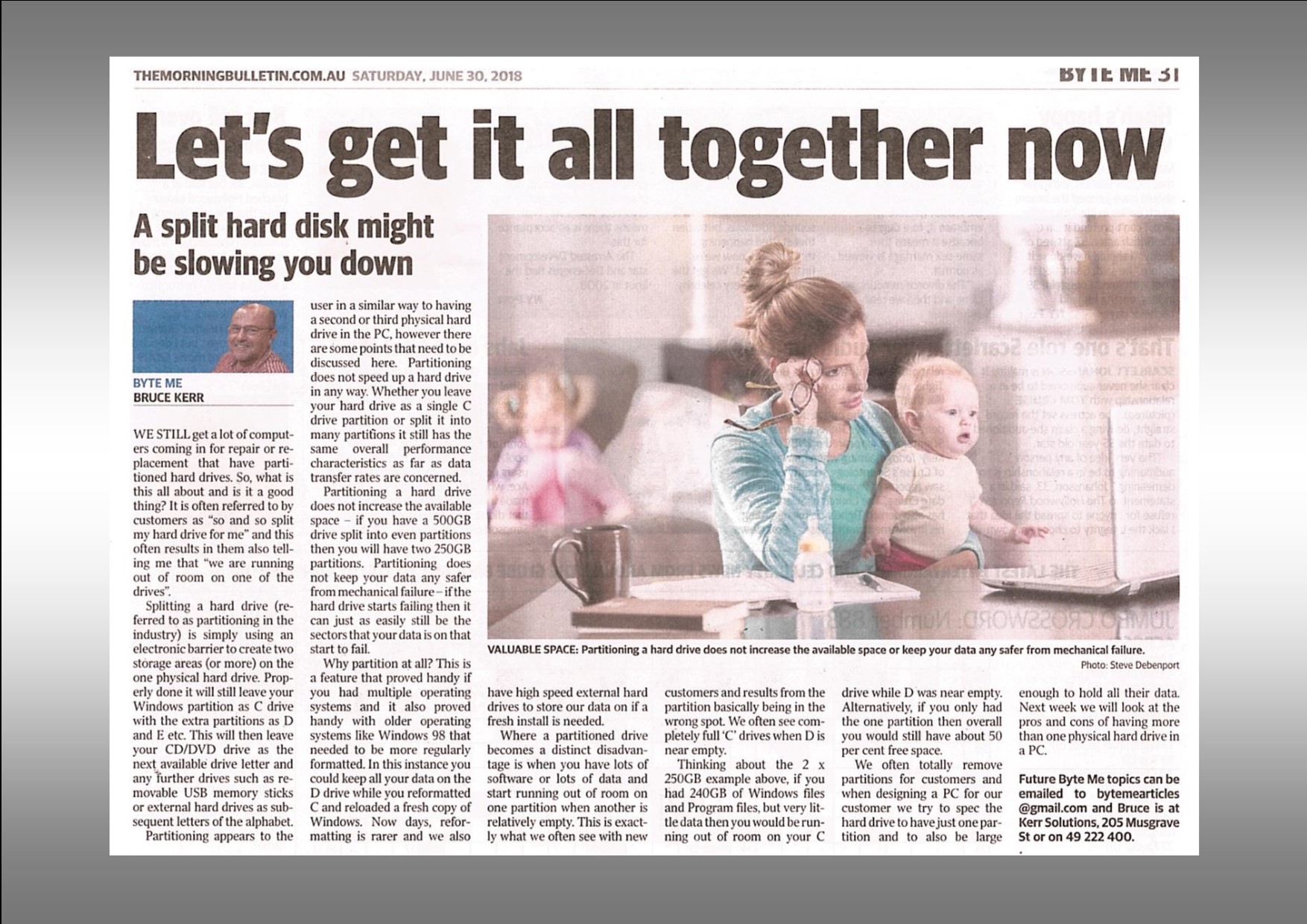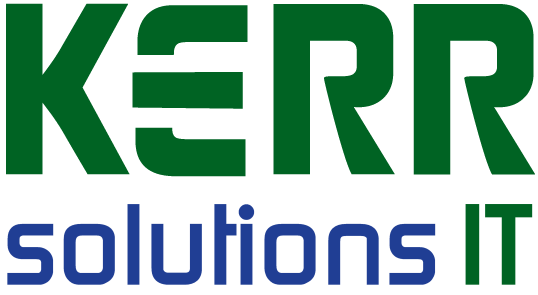30th June 2018
Let’s Get it All Together Now
We still get a lot of computers coming in for repair or replacement that have partitioned hard drives. So, what is this all about and is it a good thing? It is often referred to by customers as “so and so split my hard drive for me” and this often results in them also telling me that “we are running out of room on one of the drives”.
Splitting a hard drive (referred to as partitioning in the industry) is simply using an electronic barrier to create 2 storage areas (or more) on the one physical hard drive. Properly done it will still leave your Windows partition as ‘C’ drive with the extra partitions as ‘D’ and ‘E’ etc. This will then leave your CD/DVD drive as the next available drive letter and any further drives such as removable USB memory sticks or external hard drives as subsequent letters of the alphabet.
Partitioning appears to the user in a similar way to having a second or third physical hard drive in the PC, however there are some points that need to be discussed here. Partitioning does not speed up a hard drive in any way. Whether you leave your hard drive as a single ‘C’ drive partition or split it into many partitions it still has the same overall performance characteristics as far as data transfer rates are concerned.
Partitioning a hard drive does not increase the available space – if you have a 500GB drive split into even partitions then you will have two 250GB partitions. Partitioning does not keep your data any safer from mechanical failure – if the hard drive starts failing then it can just as easily still be the sectors that your data is on that start to fail.
Why partition at all? This is a feature that proved handy if you had multiple operating systems and it also proved handy with older operating systems like Windows 98 that needed to be more regularly formatted. In this instance you could keep all your data on the ‘D’ drive while you reformatted ‘C’ and reloaded a fresh copy of Windows. Now days, reformatting is rarer and we also have high speed external hard drive to store our data on if a fresh install is needed.

Where partitioning a drive becomes a distinct disadvantage is when you have lots of software or lots of data and start running out of room on one partition when another is relatively empty. This is exactly what we often see with new customers and results from the partition basically being in the wrong spot. We often see completely full ‘C’ drives when ‘D’ is near empty.
Thinking about the 2x 250GB example above, if you had 240GB of Windows files and Program files, but very little data then you would be running out of room on your ‘C’ drive while ‘D’ was near empty. Alternatively, if you only had the one partition here then overall you would still have about 50% free space.
We often totally remove partitions for customers and when designing a PC for our customer we try to spec the hard drive to have just one partition and to also be large enough to hold all their data. Next week we will look at the pros and cons of having more than one physical hard drive in a PC.
Future Byte Me topics can be emailed to [email protected] and Bruce is contactable at Kerr Solutions, 205 Musgrave Street or on 49 222 400.
For more advice and assistance from Kerr Solutions, like and follow us on Facebook
